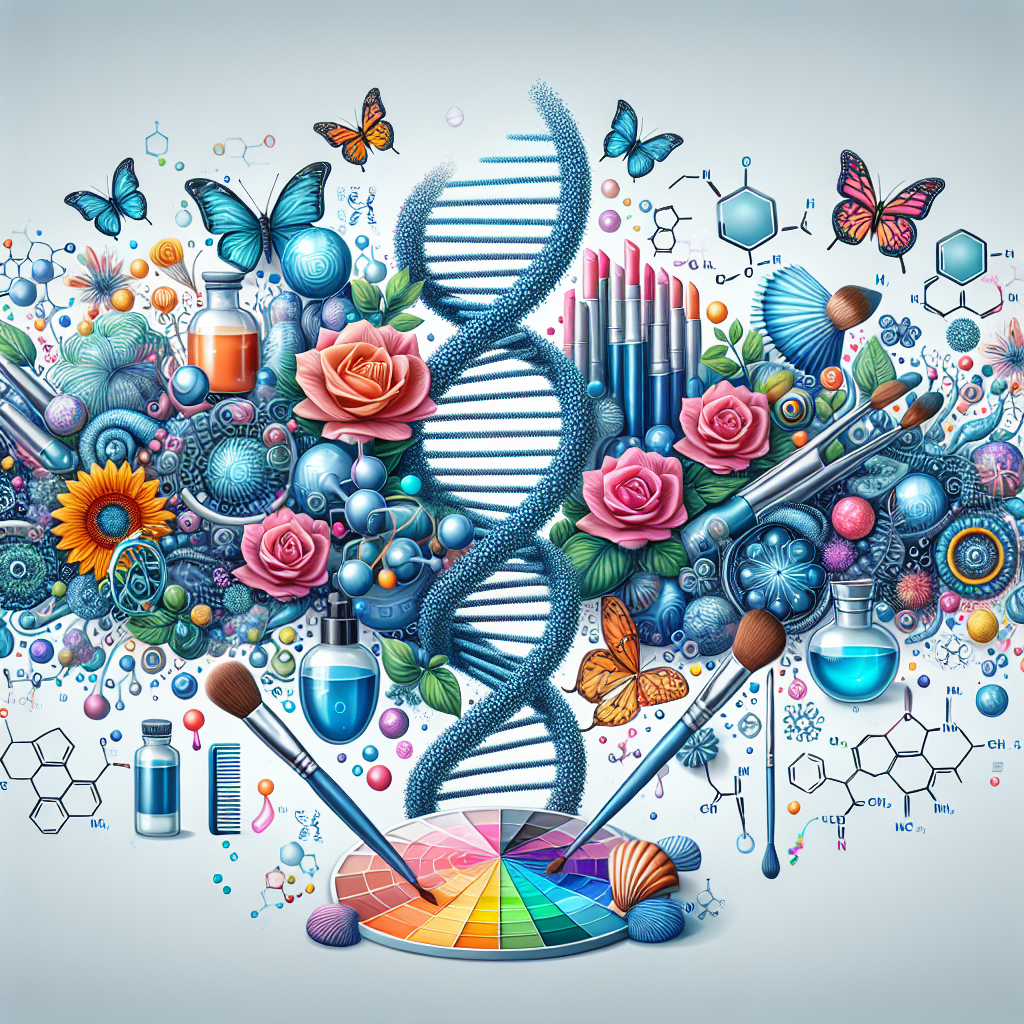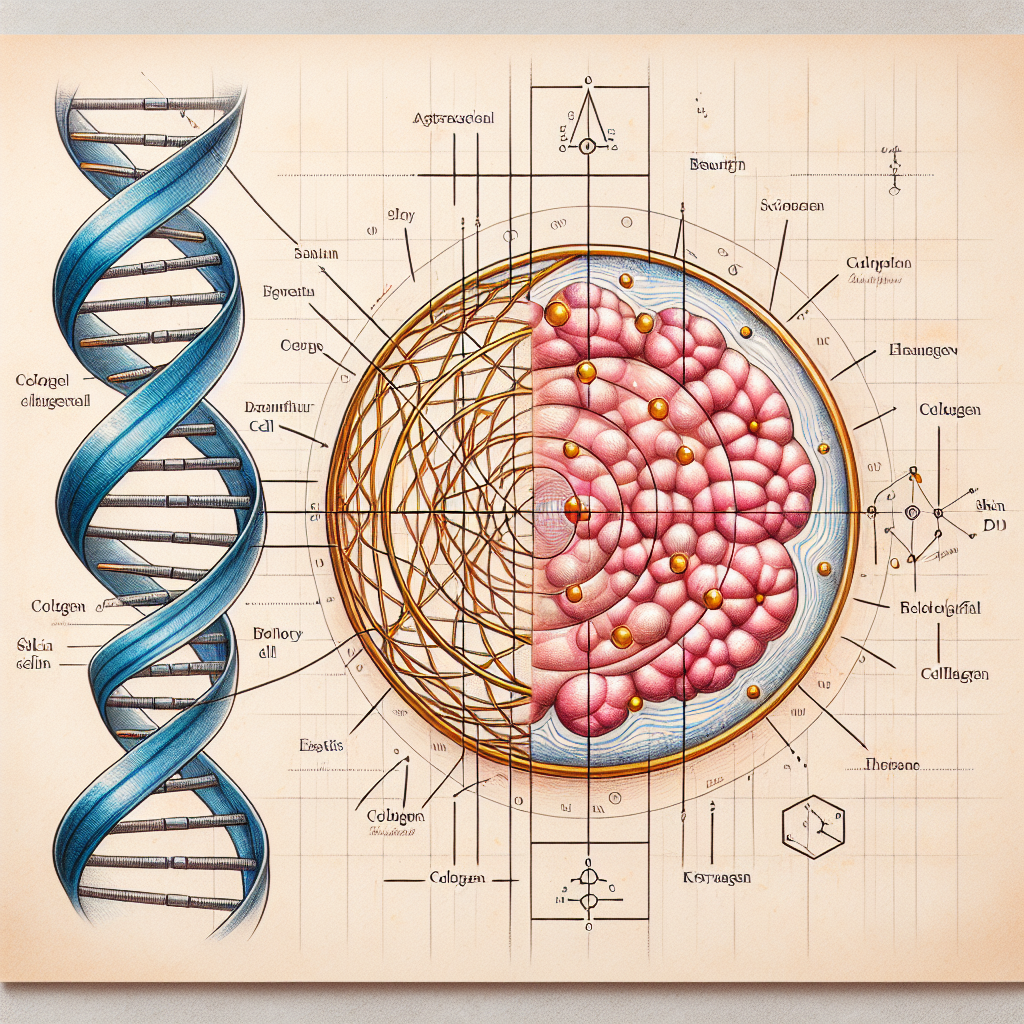The Science Behind Beauty

Discover the fascinating science behind beauty! Uncover the secrets of attractiveness and how it impacts our lives. Dive into the world of beauty now and enhance your understanding. Click here to learn more.
The Role of Genetics in Defining Beauty: A Scientific Perspective
The science behind beauty is a fascinating field of study that has intrigued researchers for centuries. It is a complex interplay of various factors, including physical attributes, cultural norms, and personal preferences. However, one aspect that has been gaining significant attention in recent years is the role of genetics in defining beauty. This article delves into the scientific perspective on how our genes influence our perception of beauty.
Genetics, the study of heredity and variation in living organisms, plays a crucial role in determining our physical characteristics. These characteristics, ranging from the color of our eyes to the shape of our nose, are largely dictated by the information encoded in our DNA. This genetic blueprint not only determines our physical traits but also significantly influences our perception of beauty.
The concept of beauty is subjective and varies across different cultures and societies. However, certain physical traits are universally considered attractive. These include facial symmetry, clear skin, and specific body proportions. Interestingly, these traits are often associated with good health and fertility, suggesting that our perception of beauty may be rooted in evolutionary biology.
Facial symmetry, for instance, is a key factor in perceived attractiveness. Studies have shown that individuals with symmetrical faces are often considered more beautiful. This preference for symmetry is not exclusive to humans; it is also observed in many animal species, indicating its deep-rooted evolutionary significance. From a genetic perspective, facial symmetry is indicative of stable development and a robust immune system, traits that are desirable for survival and reproduction.
Similarly, clear skin is another universally attractive trait. It is often associated with youthfulness and good health, both of which are indicators of fertility. From a genetic standpoint, clear skin suggests a strong immune system and a low burden of parasites, making it an attractive trait for potential mates.
Body proportions, particularly the waist-to-hip ratio in women and the shoulder-to-waist ratio in men, also play a significant role in perceived attractiveness. These ratios are believed to be indicators of fertility and overall health. Genetically, these traits suggest a high reproductive potential, making them desirable from an evolutionary standpoint.
While genetics plays a significant role in defining beauty, it is important to note that it is not the sole determinant. Environmental factors, personal experiences, and cultural norms also significantly influence our perception of beauty. For instance, societal standards of beauty often change over time and vary across different cultures. Moreover, individual preferences can also be shaped by personal experiences and interactions.
In conclusion, the science behind beauty is a complex interplay of genetics, environment, and personal preferences. While our genes significantly influence our physical traits and our perception of beauty, they do not solely define it. Beauty is a multifaceted concept that is shaped by a myriad of factors, making it a fascinating field of study. As we continue to unravel the mysteries of beauty, we gain a deeper understanding of our nature and our evolution as a species.
The Psychology of Attraction: Unraveling the Science Behind Beauty

The science behind beauty is a fascinating and complex field, intertwining elements of psychology, biology, and culture. It’s a subject that has intrigued philosophers, artists, and scientists for centuries, and continues to captivate us today. The psychology of attraction, in particular, is a rich area of study that seeks to unravel the mysteries of why we find certain people, features, and characteristics more attractive than others.
The concept of beauty is subjective and varies across different cultures and societies. However, there are certain universal standards of beauty that seem to transcend cultural boundaries. These standards are often linked to biological indicators of health and fertility, suggesting that our perceptions of beauty may be hardwired into our DNA as part of our evolutionary survival instincts.
One of the most widely recognized theories in the psychology of attraction is the “average” hypothesis. This theory suggests that we are most attracted to faces that are symmetrical and have average features. The rationale behind this is that symmetrical faces are perceived as more healthy and fertile, while average features are seen as less likely to carry genetic abnormalities. This theory is supported by numerous studies, which have consistently found that people rate symmetrical, average faces as more attractive.
Another important factor in the psychology of attraction is the role of familiarity. Research has shown that we are more likely to be attracted to people who look similar to us or those we spend a lot of time with. This is known as the “mere exposure” effect, which suggests that the more we are exposed to something, the more we tend to like it. This could explain why we often find ourselves attracted to people who share our features or remind us of our family members.
Color also plays a significant role in our perceptions of beauty. Studies have found that people are more attracted to others who have a healthy, youthful glow, which is often associated with a rosy complexion. This preference for certain skin tones could be linked to our evolutionary instincts, as a healthy glow is often a sign of good health and fertility.
The psychology of attraction also extends to non-physical characteristics. Personality traits, such as kindness, intelligence, and a good sense of humor, are often considered attractive. These traits can enhance our perceptions of a person’s physical attractiveness, a phenomenon known as the “halo effect”. This suggests that our overall impression of a person can influence how we perceive their individual features.
In conclusion, the science behind beauty is a complex interplay of biology, psychology, and culture. While our perceptions of beauty are influenced by societal standards and personal preferences, they are also deeply rooted in our evolutionary instincts for survival and reproduction. The psychology of attraction is a fascinating field that continues to unravel the mysteries of why we find certain people, features, and characteristics more attractive than others. As we continue to explore this intriguing subject, we gain a deeper understanding of our own behaviors and preferences, shedding light on the timeless question of what makes someone truly beautiful.
The Impact of Symmetry on Perceived Beauty: A Deep Dive into the Science
The science behind beauty is a fascinating field of study that has intrigued researchers, philosophers, and artists for centuries. One of the most compelling aspects of this field is the impact of symmetry on perceived beauty. This article delves into the science behind this phenomenon, exploring why symmetry is so appealing to the human eye and how it influences our perception of beauty.
Symmetry, in its simplest form, refers to the balance and proportionality of an object or a design. In nature, symmetry is ubiquitous, from the radial symmetry of a snowflake to the bilateral symmetry of a human face. This prevalence of symmetry in our natural environment has led many scientists to believe that our preference for symmetry is an evolutionary adaptation.
According to the evolutionary psychology theory, our ancestors who were better at recognizing symmetry had a survival advantage. They could identify healthy, well-proportioned mates, spot predators hiding in the grass, and find ripe fruits among the foliage. Over time, this ability to recognize and appreciate symmetry became hardwired into our brains, influencing our aesthetic preferences.
This theory is supported by numerous scientific studies. For instance, research has shown that people tend to find symmetrical faces more attractive than asymmetrical ones. This preference is not limited to humans; even animals, such as birds and fish, show a preference for symmetrical mates.
Moreover, symmetry is not just about physical attractiveness. It also plays a crucial role in our perception of beauty in art and design. From the balanced compositions of Renaissance paintings to the geometric patterns of Islamic art, symmetry has been a fundamental principle of aesthetics throughout history.
However, it’s important to note that while symmetry contributes to beauty, it is not the only factor. Other elements, such as color, texture, and form, also play a significant role in our perception of beauty. Furthermore, too much symmetry can sometimes be perceived as boring or monotonous. This is why many artists and designers intentionally introduce asymmetry or “imperfections” to create interest and balance.
Interestingly, the impact of symmetry on perceived beauty also extends to the realm of architecture. Buildings and structures that exhibit a high degree of symmetry are often considered more aesthetically pleasing. This is because symmetry imparts a sense of order and harmony, which our brains find pleasing.
In conclusion, the science behind beauty is a complex interplay of biology, psychology, and culture. Symmetry, with its deep roots in our evolutionary history and its pervasive influence on our aesthetic preferences, is a key piece of this puzzle. However, it’s just one piece. Beauty is a multifaceted concept that encompasses a wide range of elements, from the physical to the emotional, from the tangible to the intangible. As we continue to explore this fascinating field, we will undoubtedly uncover more insights into the science behind beauty.